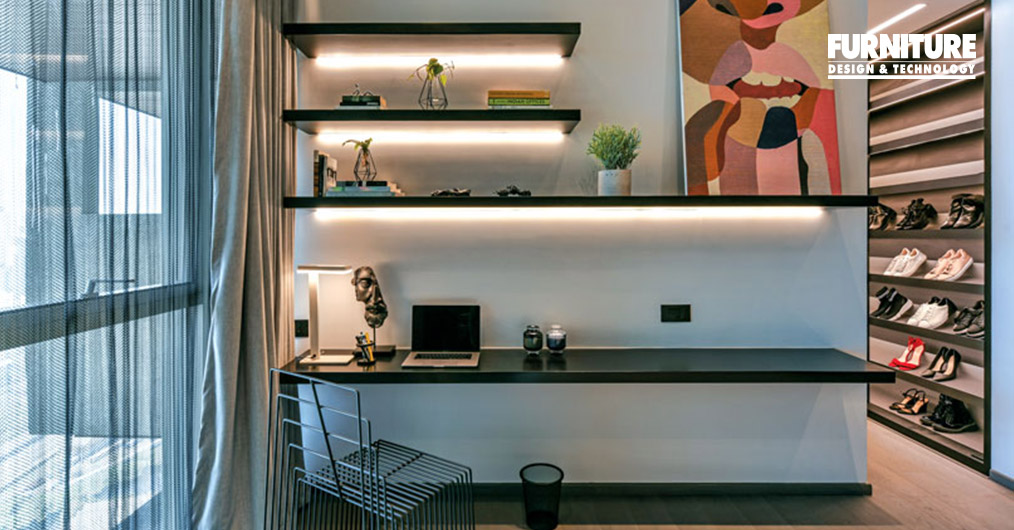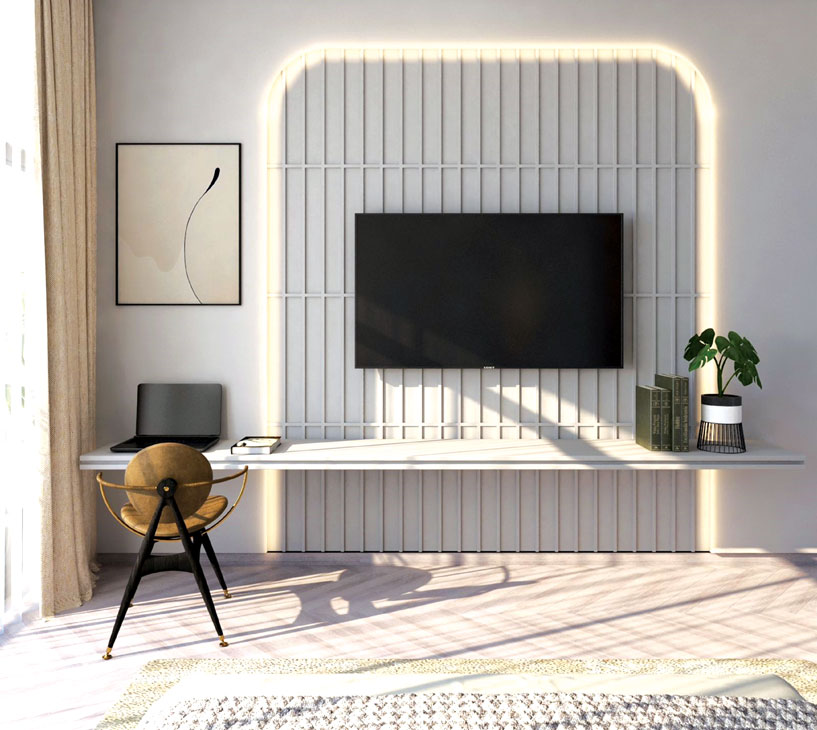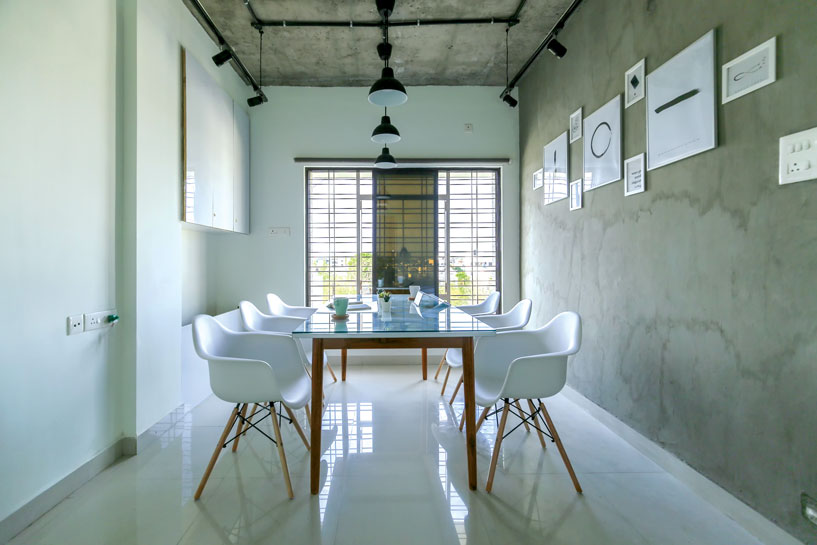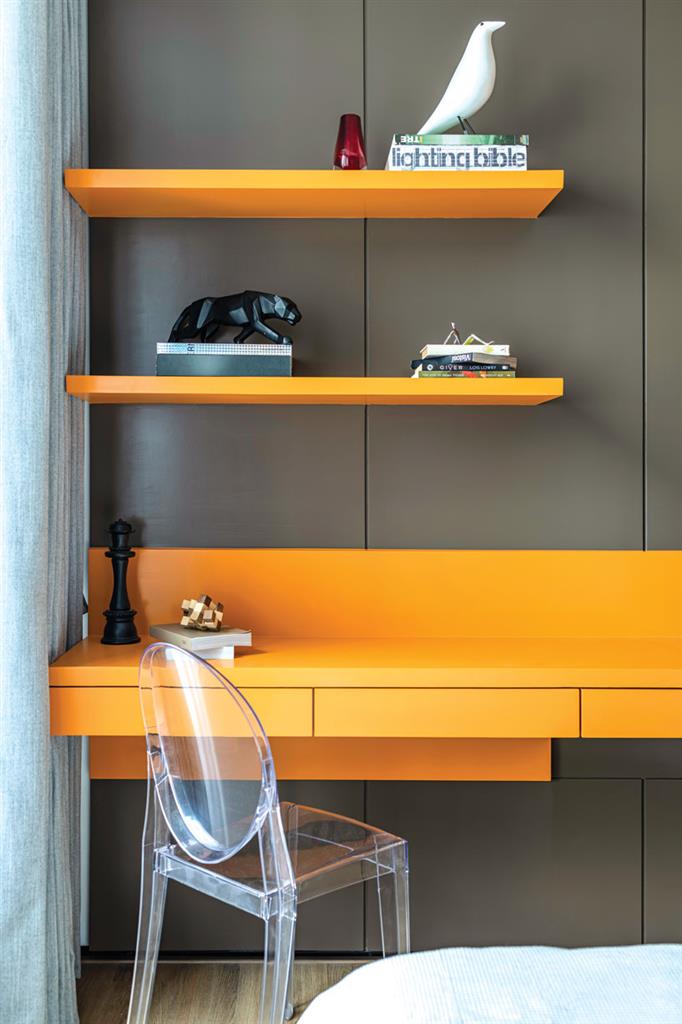
The COVID-19 crisis created a domino effect on several industries and led to the rise of trends, which disappeared in a New York minute eventually. These trends altered the way we live and work – right from rearranging and realigning our lives and homes to drawing a distinguished line between personal space and a home-office space. One of the few trends, rather a significantly drastic change that has stuck through these past couple of years is the work-from-home (WFH) notion.
 Image credit: Anand Atelier Associates
Image credit: Anand Atelier AssociatesWFH, a subtle yet noteworthy norm, was birthed during the pandemic when personal spaces were transformed into working corners with strict practices and invisible borders. To understand this concept in depth and the furniture designs that ushered with it, FURNITURE DESIGN AND TECHNOLOGY (FDT) spoke to principal furniture brands, architects and designers to gain industry insights and design perspectives on WFH furniture and its stance in the years ahead.
As per Research and Markets’ data, the Indian furniture market is forecast to grow from an estimated USD 2.22 billion in FY2021 to USD 3.49 billion by FY2026. The steady rise is expected to be on account of a rising number of companies offering an option of remote working coupled with the growing number of IT companies adopting cloud-based solutions, consumer preference for premium quality products, increasing urban population and rising disposable income, and growing internet connectivity.
 Image credit: The Monochrome Studio
Image credit: The Monochrome StudioThe WFH furniture market is majorly categorized into type and material. Study tables, chairs, storage units, recliners, etc come under type, of which study tables and chairs accounted for the largest share in the Indian WFH furniture market. In terms of materials, comprising wood, plastic, metal and others, wood grabbed a majority of the stake, followed by metal and plastic. Experts believe that the furniture market has done exceptionally well throughout the pandemic and is further expected to grow steeply in 2023. The Indian furniture market is, thus, anticipated to reach USD 61.09 billion by the end of 2023, informs a Times Property article.
Furniture holds an important role in any setup as every establishment needs a decent number of functional pieces. With a greater number of people moving to buy home-office furniture that suits their needs, the WFH furniture market is poised to prosper. “With the effective WFH models of work at the time, customers quickly began turning to recliners, desks, foldable kitchen nooks, laptop stands and sofas to best optimise the limited space at home for multi-functionality,” exclaims Santosh Buddhiraju, Senior Director, Furniture Flipkart.
 Image credit: Open Atelier
Image credit: Open AtelierThe trend in WFH furniture came with its own fair of adjustments where remote workers started to look for furniture that is comfortable with a mix of cool and casual designs yet formal. Manoj Tomar, Managing Director, AFC Furniture Solutions, enlightens us, “The design philosophy behind WFH combo furniture is to create a functional, comfortable and aesthetically pleasing workspace that can be easily integrated into the home environment. It often features clean lines, simple shapes, and neutral colours, which makes it easy to coordinate with other pieces of furniture in the home.” The WFH era demanded a formal professional setting within the family spaces. “Using a soothing colour palette and natural materials helps create stress-free and productive environments,” apprises Rahul Mistri, Founder and Principal Designer, Open Atelier (Mumbai).
It was crucial for manufacturers to offer innovative and practical solutions for remote workers, making sure the furniture is versatile, practical and space-saving by combining various functionalities including storage, work surface and seating, all in one unit. Pooja Chaudhari, Founder, The Monochrome Studio (Nagpur) highlights, “With respect to the human anthropometric requirements, the modular adjustable-height table is the star of the WFH era. Wooden tops or plain white tops that blend with anything with adjustable fittings have made it to many of our projects recently, to add utilitarian value to the space and an added comfort to the client.”
Additionally, with space crunch scenarios in apartments, “Study desks and dining tables laid in wood, veneer or laminate panels can provide a modern segregation of the work area from the rest of the space. Compact and comfortable chairs that harmonise with the home's overall aesthetics work well instead of an office chair on wheels in the bedroom,” says Mistri.
Buddhiraju confirms that, consequently, materials, including engineering wood and mesh fabrics, also saw the highest adoption. “Our collection is made of the finest leather, veneer, MDF, stainless steel and other durable materials. For the workstation, whether you are looking for a large, elegant table with a timeless design, or traditional look or a sleek and compact office desk with a motorized height adjustment mechanism, we have it all,” asserts Sameer Hora, Managing Director, IDUS.


However, amid this, comfort took the center stage, continuing to this day. Ankit and Anand Ojha, Principal Designers, Anand Atelier Associates, (Mumbai) cite, “I have seen people prioritizing comfort, open spaces, natural elements over other things from their list of requirements. For WFH furniture, we are required to choose from sleek designs that are detailed and comfortable as the user is going to be spending long working hours on it. Clients require more user-friendly furniture, that is easy to accommodate into the space as well as can store the daily list of requirements like notepads, laptops, stationary, etc.” As for Mistri, some of the most sought-after furniture pieces are “desks that can be turned into compact dining or coffee tables. Trolley storage also came into light with the need for fluid and clutter-free spaces. Mesh storage that conceals the objects and rattan furniture or furniture from repurposed wood were picked for their natural palette. Sit and stand desks and ergonomic furniture that would help maintain a healthy posture while working long hours were preferred.”
This article is a part of our exclusive article ‘WFH Furniture’ which is originally published in Furniture Design & Technology (FDT Magazine) April 2023 print issue. If you want to read the full article, please subscribe Furniture Design & Technology Magazine here:
Furniture Design India and the magazine FURNITURE DESIGN & TECHNOLOGY (FDT magazine) are from the trusted 22-year-old media house of SURFACES REPORTER and PLY REPORTER.
FDT is a B2B monthly bilingual magazine from India that shares the pulse of the furniture business in India and connects the manufacturers, OEMS, product designers, architects, showrooms, designers and dealers.
Read More© 2025 Furniture Design and Technologies.. All Rights Reserved. Developed by eyeQ Advertising